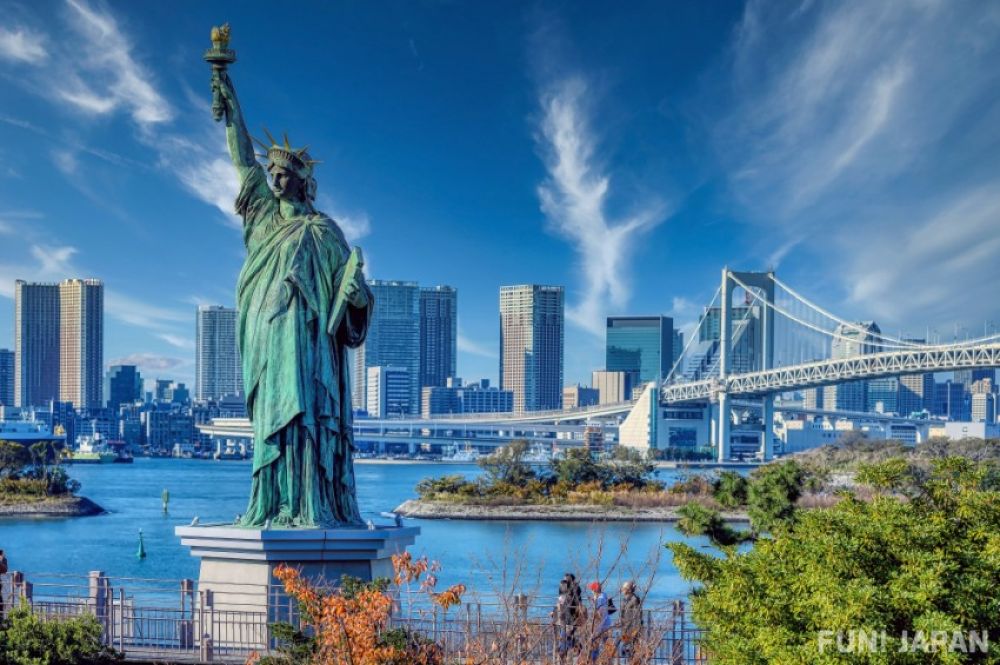

Odaiba, initially conceived as a set of small man-made fort islands in the Edo period, was designed to protect Tokyo from the threat of marine attacks. However, it was not until the late 20th century that the area saw development aimed at transforming these islands into a modern and popular tourist destination. The redevelopment of Odaiba began in earnest during the 1980s as part of an ambitious plan to showcase futuristic living and serve as a symbol of technological advancement.
The Tokyo Teleport Town development project in the 1990s, which included the construction of the iconic Rainbow Bridge and the Yurikamome transit line, marked the real beginning of tourism in Odaiba. With this improved access, Odaiba quickly grew into a leisure and entertainment hub. Attractions like the Palette Town, Aqua City, and the futuristic Fuji TV building became landmarks, and Odaiba's popularity surged, especially among domestic tourists.
In the lead-up to the year 2000, Odaiba became synonymous with innovation, hosting various technology exhibitions and international conventions. The addition of shopping malls, the Oedo Onsen Monogatari hot springs park, and the Odaiba Seaside Park further enhanced its appeal as a diverse tourist destination.
Odaiba's tourism continued to evolve into the 21st century, leveraging its futuristic landscape and diverse attractions. The presence of the colossal Gundam statue at DiverCity Tokyo Plaza has continually drawn anime and robot enthusiasts from all over the world. Odaiba's beachfront offers a unique view of the Tokyo skyline, providing a rare experience of urban and seaside tourism within the metropolis.
In recent years, there has been a trend toward experience and pop-culture tourism in Odaiba. Themes such as virtual reality (VR) experiences, interactive museums like teamLab Borderless, and numerous seasonal events have attracted a new wave of international visitors. Odaiba has also become a prominent location for Olympic events, including some for the postponed Tokyo 2020 Games, which increased its visibility and importance on the global stage.
Sustainable tourism has also been a focus, with the Tokyo metropolitan government and private stakeholders incorporating eco-friendly practices to ensure the conservation of Odaiba's unique environment.
With its ever-transforming skyline, Odaiba continues to integrate modern trends into its touristic experience, ensuring that it remains a must-visit destination that offers something for every kind of traveler, from the technophile to the beachgoer.
Looking to the future, Odaiba is poised for further growth. Plans for new attractions, coupled with Japan's overall strategy to boost tourism, suggest that Odaiba will continue to thrive and redefine itself. Post-pandemic recovery efforts include enhancing international appeal through culture, entertainment, and innovative tourism experiences, making Odaiba a dynamic and adaptive destination that reflects the past, present, and future of Tokyo.
Ultimately, Odaiba remains a powerful symbol of Tokyo's continuous transformation and its unwavering ambition to be a leading city of the future, both in terms of urban development and tourism.